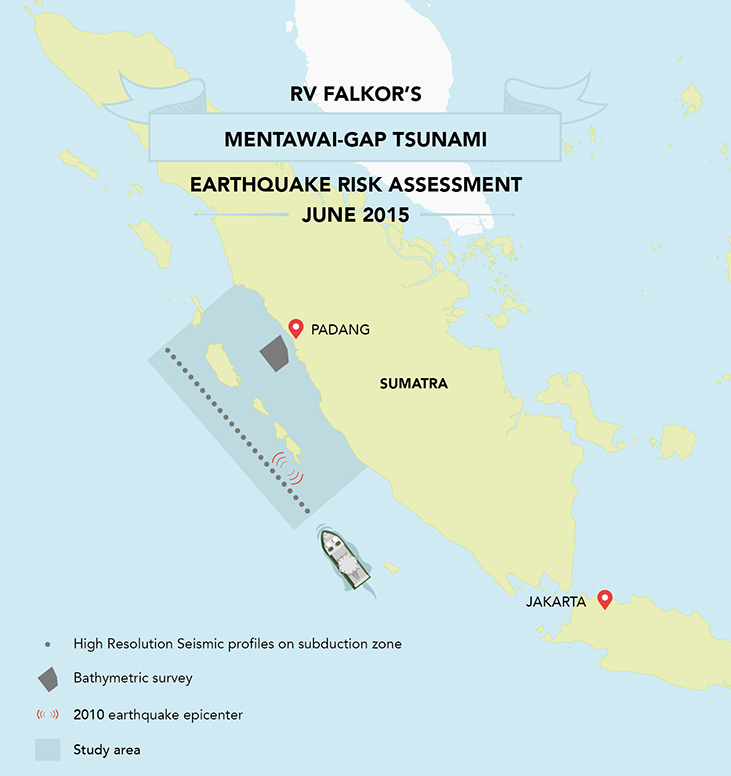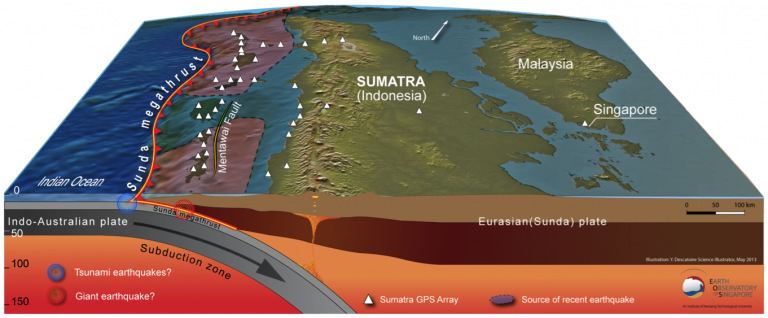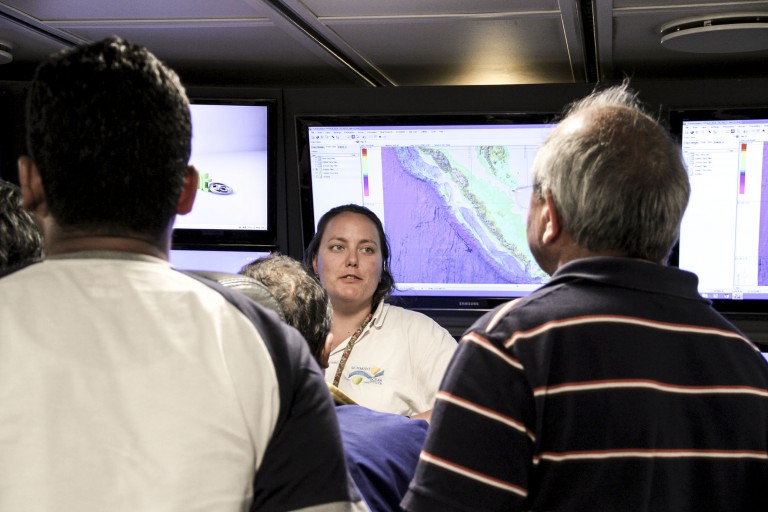
Predictions based on the past
Doctor Satish Singh, co-leader of the Mentawai Gap-Tsunami Earthquake Risk Assessment (or MEGATERA) expedition, believes there is one essential tool you can never leave at home when working on science, especially on a maritime expedition: creativity.
Creativity is given a wonderful foundation through a proactive attitude and an open mind, particularly when science does what it does best: reveal surprises along with knowledge. You start with a plan, and then have to negotiate with life in order to go through with it.
According to experts of the Earth Observatory of Singapore, the history of earthquakes on the Sunda megathrust – the boundary where the Sunda and the Indo-Australian plates meet – shows that this fault releases energy through a series of large earthquakes about every 200 years. A new series was initiated in 2007. This means they expect strong earthquakes will have to occur in order for the megathrust to release its stored energy in the coming years. It is therefore imperative to generate information that can benefit exposed coastal communities who may be unprepared for such an event.
The Future of Faults

The strategy is set: R/V Falkor will sail along the western coast of Sumatra and run a series of technology-based experiments that aim to deliver key information. The goal is better understanding of the structure of the subduction zone to the west of Sumatra. This knowledge will be fundamental to prepare for the day when the plates slip, generating what could be a magnitude 8.8 earthquake, as well as a large tsunami.

Preparation is an approach to which Allan Doyle, 2nd officer and safety specialist of R/V Falkor, firmly believes. He applies it to his job every day, and that is the reason he is excited and curious about the images that will soon fill the visual matrix of the dry lab: “This is the first seismic cruise that I’ve done. I’ve heard the theory and I’m looking forward to seeing it put into practice. We could see the implications of the research itself, not just for the people in Sumatra, but also perhaps scientific findings that can be read across the other faults, leading to prediction and advance warnings of future events.”
By the end of the cruise, the scientists will have detailed imagery of the structural composition of the subduction plate, with special interest in areas that have not yet released the energy they’ve been storing for over 200 years.
That is the plan, and we cannot wait for science to begin surprising us.

